Anxiety isn't just feeling nervous before a test or a job interview. For a lot of people, it's this constant buzzing in your brain that won't quiet down—like you can’t ever relax, even for a minute. That’s where addiction can sneak in. It promises relief from the stress, even if just for a little while. But that relief often leads to a whole new set of problems.
If you’re using something—maybe alcohol, vaping, comfort food, or even scrolling endlessly on your phone—to take the edge off, it might work at first. But after a while, you need more and more to feel that same sense of calm. It’s not just about willpower. Anxiety messes with your brain’s chemistry, making you crave quick fixes and ignore long-term consequences. Understanding that isn’t just reassuring—it’s the first step in changing your story.
- How Anxiety Shows Up in Real Life
- The Link Between Anxiety and Addiction
- Why Anxiety Can Trigger Addictive Behaviors
- Breaking the Cycle: Healthier Ways to Cope
- When to Get Help and What to Expect
How Anxiety Shows Up in Real Life
You probably know someone who worries a lot, but anxiety isn’t always that obvious. It can hit differently for different people. You might feel your heart racing when nothing’s actually happening, get stomach aches before work, or spend half the night overthinking texts you sent three days ago. It’s not just in your head—it’s in your body, too.
Here’s what anxiety often looks like in day-to-day life:
- Your sleep sucks, no matter how tired you are.
- You avoid stuff (parties, meetings, calling the bank) because even thinking about them stresses you out.
- That jittery, on-edge feeling sticks around for hours—or days.
- You get headaches, muscle tension, or even chest pain with no clear reason.
- It’s tough to focus, like your brain is always skipping channels.
According to the National Institute of Mental Health, around 19% of adults in the U.S. had an anxiety disorder in the last year alone. But a lot more people walk around with symptoms that never get an official label.
| Common Physical Signs | Common Emotional Signs |
|---|---|
| Racing heart, sweating, nausea | Constant worry, dread, irritability |
| Muscle tension, shaking, trouble sleeping | Restlessness, fear, trouble concentrating |
Some folks try to numb anxiety by zoning out with their phones, working overtime, or reaching for food, alcohol, or other quick fixes. It’s all a way to feel better, but those habits can become an issue on their own if they start running your life. Spotting how anxiety shows up for you is the first step in keeping it from steering you into worse habits or even addiction.
The Link Between Anxiety and Addiction
You don’t have to look hard to spot the close connection between anxiety and addiction. People dealing with constant tension or worry often turn to quick fixes. The problem is, those fixes—like drinking, using pills, or even binge-watching—can become habits people rely on just to get through the day.
Science backs this up. Studies show that about 20% of folks with an anxiety disorder also struggle with a substance use disorder at some point. That’s one in five. Why? When your brain is in fight or flight mode a lot, it starts looking for ways to escape. Alcohol, drugs, nicotine, and even comfort foods are like pressing a pause button on stress—but it’s only temporary.
Here’s what’s happening: anxiety fires up the part of your brain that screams “danger!” Substances that numb, distract, or calm you actually tamp down those alarms—for a little while. But when the effect wears off, the anxiety often snaps right back, maybe even stronger. Eventually, a cycle starts. Anxiety leads to self-medication, which creates dependency, and that dependency increases anxiety.
- Most people don’t realize how common this is. In fact, doctors and therapists see anxiety show up alongside addiction so much, they have a special name for it: a “co-occurring disorder.”
- This combo is trickier to treat than either problem on its own, because they feed off each other.
- Trying to fix addiction without dealing with the underlying anxiety usually doesn’t last. The anxiety just keeps pushing you back toward those old habits.
Check out these numbers for a quick look at how often anxiety and addiction overlap:
| Condition | Chance of Substance Use Disorder |
|---|---|
| Generalized Anxiety | ~20% |
| Panic Disorder | ~25% |
| Social Anxiety | ~15% |
So, if you find yourself caught in this loop, you’re definitely not alone. Understanding that they’re connected is key—it’s not a sign of weakness, it’s just how brain chemistry works when you’re trying to outrun stress day after day.
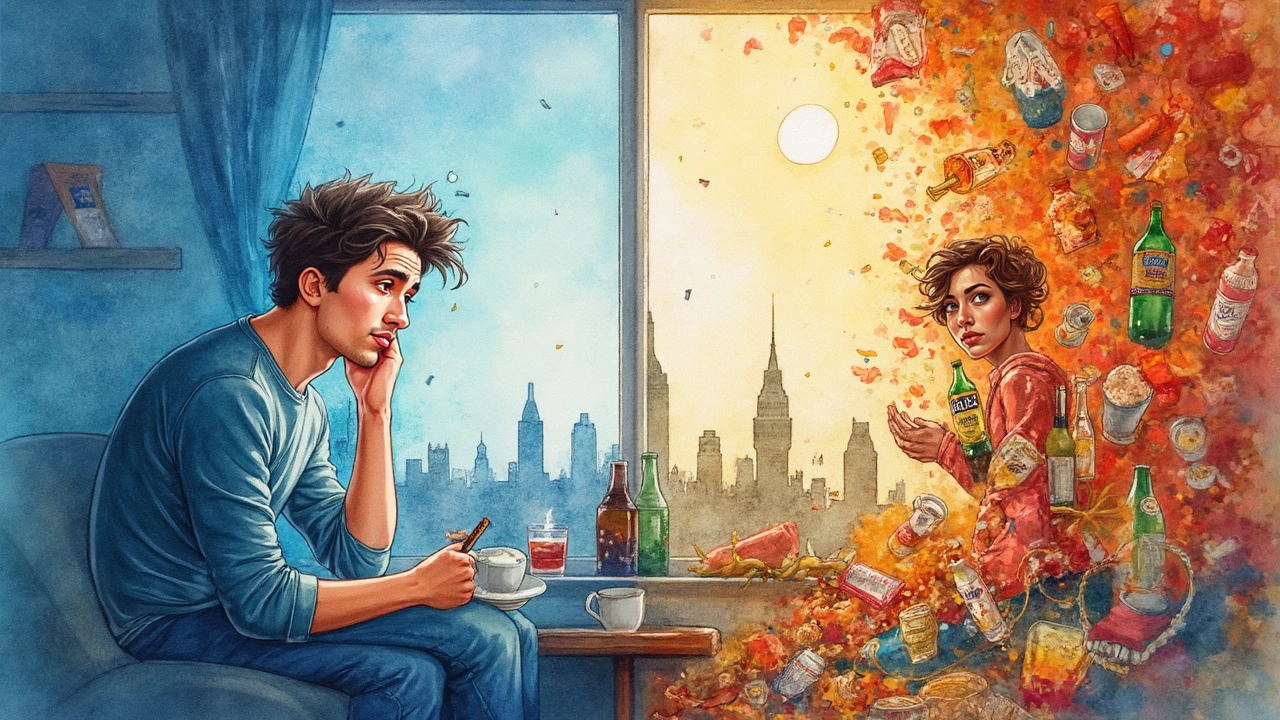
Why Anxiety Can Trigger Addictive Behaviors
Ever wonder why it feels tempting to reach for a drink, smoke, or snack when you’re anxious? You’re definitely not alone. Anxiety kicks your brain into survival mode, so you look for anything—food, alcohol, shopping, or scrolling on your phone—that might take the pressure off. It’s not about being weak; it’s how your brain tries to hit the brakes on all those racing thoughts.
Here’s what’s happening under the hood: Anxiety cranks up your body’s stress hormones. We’re talking about real, measurable chemical changes—like a flood of cortisol and adrenaline. This messes with your ability to think things through and resist cravings. At the same time, your brain’s reward system is hunting for fast relief, so it latches onto whatever gives you a quick hit of feel-good chemicals, like dopamine.
That connection between anxiety and addiction is backed by solid stats. Studies show about 20% of people with an anxiety disorder end up dealing with some kind of substance use disorder. That’s double the rate compared to those without chronic anxious feelings.
| Condition | Chance of Developing Addiction |
|---|---|
| Anxiety Disorder | 20% |
| No Anxiety Disorder | 10% |
Triggers are a huge part of this puzzle. Whether it’s an embarrassing moment, a big argument, or just the daily grind, stress opens the door for addictive habits. And it doesn’t stop with drugs or alcohol. Anything that soothes anxiety fast—from compulsive buying to binge eating—can turn into a crutch.
- You start associating certain activities or substances with feeling better, even just for a bit.
- Over time, your brain learns that pattern and pushes you to do it again—especially under stress.
- This cycle makes it tough to tell if you’re calming your anxiety or just avoiding it for now.
It’s way more than a lack of discipline—your body and brain are practically teaming up to make repeated behavior feel like the only escape.
Breaking the Cycle: Healthier Ways to Cope
If you're stuck in a loop where anxiety pushes you toward addictive habits, changing things up can feel tricky. Here’s the good news: there are concrete steps you can start using right now. These aren’t quick fixes, but they actually help you manage anxiety and dodge the pull of addiction.
- Exercise is a game-changer. Getting active is proven to lower stress hormones and boost mood. You don’t need to run marathons—a walk around the block can make a real difference.
- Mindfulness actually works. Studies show just a few minutes of mindful breathing each day helps tone down racing thoughts. Apps like Headspace or Calm are good starting points.
- Talk it out, even if it feels weird. Reaching out to friends, family, or a therapist chips away at anxiety’s power. Support groups (online or in-person) are helpful if you don’t want to go solo.
- Healthy sleep is not a luxury. Not getting enough sleep cranks up both anxiety and cravings. Aim for a regular bedtime and ditch screens at least half an hour before you hit the sack.
- Replace, don’t just remove. Instead of just cutting out your go-to coping mechanism, swap it for something better—a hobby, a puzzle, or even chewing gum if you’re trying to quit smoking.
Want some quick numbers? In a 2023 survey from the American Psychological Association, people who actively used strategies like exercise and mindfulness were 52% less likely to fall into unhealthy coping habits compared to those who didn’t.
| Healthy Coping Strategy | Reported Benefit |
|---|---|
| Exercise (20 mins/day) | Lowered anxiety by 30% |
| Mindful Breathing | Improved focus and sleep |
| Social Support | Lessened addictive cravings |
Small tweaks add up big over time. Every step away from old habits is a step toward better mental health. Nobody’s perfect, but every effort to break the anxiety and addiction cycle builds real change.
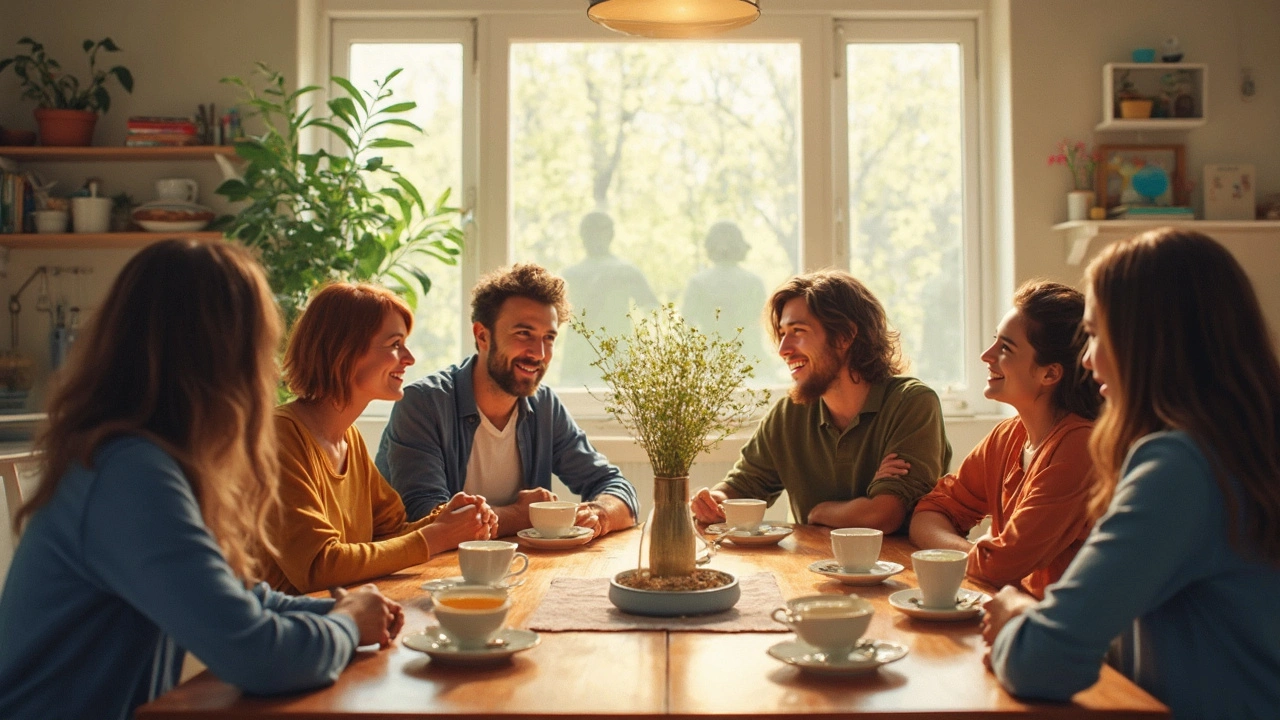
When to Get Help and What to Expect
It’s not always easy to know when anxiety or addiction crosses the line from “manageable” to “time to get help.” Here’s a sign: if your days revolve around calming your nerves—whether with a drink, your phone, food, or something else—and you can’t break the pattern even when you want to, it’s time to reach out. Another common nudge happens when your work, relationships, or health start to take hits because of your coping habits.
Getting help doesn’t mean you’re broken. Most people with a mental health struggle put off seeking help for months (or even years), hoping things will just improve. The truth? Early support makes things a whole lot easier down the road. According to the National Institute on Drug Abuse, over 60% of people with a substance use disorder also deal with some form of anxiety or depression. You’re definitely not alone in this.
Here’s what to expect if you decide to take that step:
- Assessments first. Professionals (counselors, therapists, or even your doctor) usually start with questions about your habits, moods, triggers, and daily life. There’s no judgment—just figuring out what you need.
- Personalized plans. Good treatment isn’t “one-size-fits-all.” Your plan might include therapy, medication, regular check-ins, or groups.
- Therapy options. Cognitive behavioral therapy (CBT) is a go-to for both anxiety and addiction. It helps you spot unhealthy patterns and try new ways to cope.
- Mix of treatments. Sometimes, a mix of talk therapy, lifestyle changes, and medicine works best—especially if the anxiety is severe.
If you’re worried about time or cost, many therapists now offer online sessions, and there are support groups (like SMART Recovery or AA) that meet in person or virtually for free. You can also start by talking to your regular doctor—they’re used to these conversations.
The scariest part is often just making the decision. But once you start, it doesn’t feel as overwhelming. Most people notice improvement within weeks, especially with the right support. Even if you slip up or fall back on old habits, just reaching out keeps you moving forward. The trick is not to wait until things feel completely out of control—help works best when you grab it early.

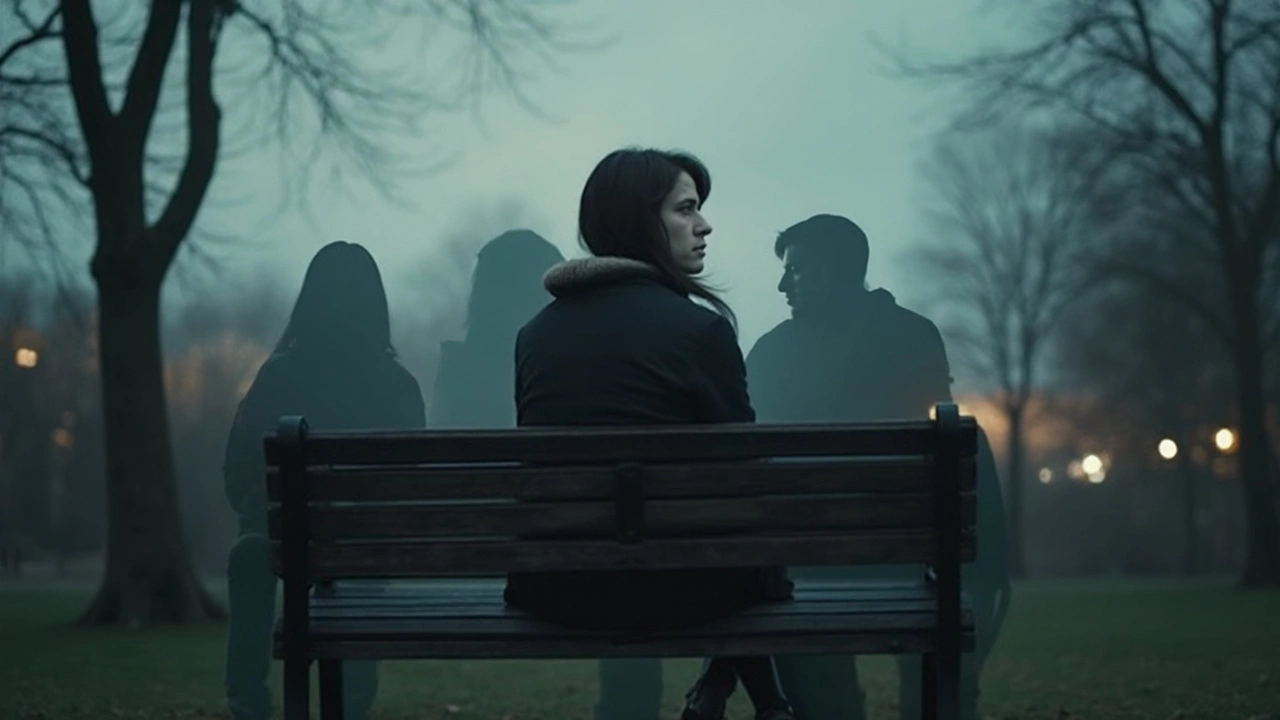
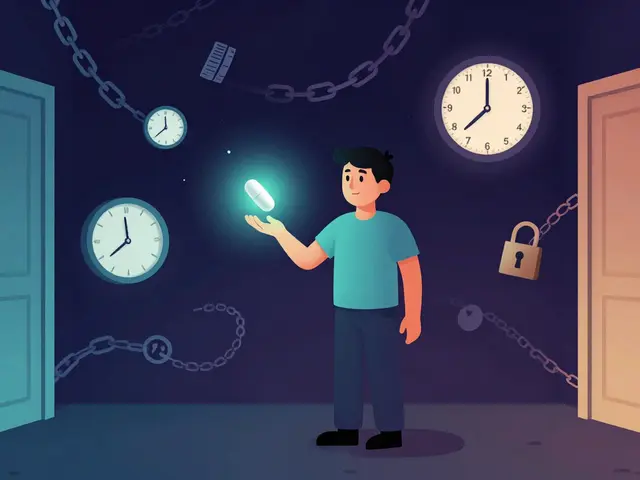
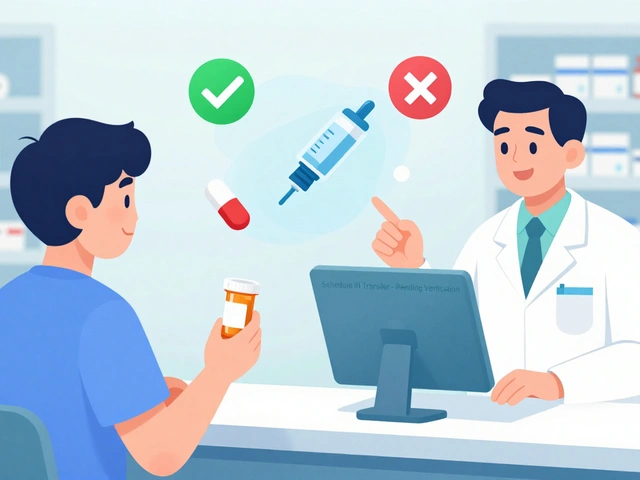
Andrew Wilson on 23 April 2025, AT 20:03 PM
Anxiety isn’t an excuse, it’s a real battle.